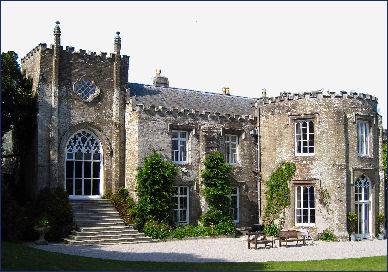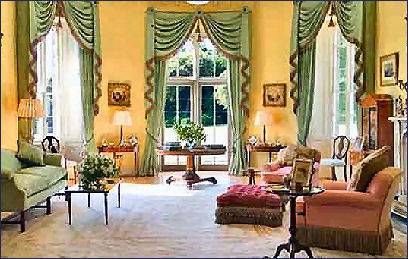Prideaux Place
OS Grid ref:- SW 9134 7551
 Prideaux Place, one of the brightest jewels in Cornwall's heritage crown is situated in the ancient town of Padstow on the north coast of Cornwall.
Prideaux Place, one of the brightest jewels in Cornwall's heritage crown is situated in the ancient town of Padstow on the north coast of Cornwall.
Built in 1592 by Nicholas Prideaux, Prideaux Place has been the home of the Prideaux-Brune family for over 400 years. The Prideaux family have been notable in Cornwall as Lords of Prideaux Castle at Luxulyan. Edmund, the first Baronet of Netherton and his son, Edmund of Ford Abbey, were both lawyers. Edmund of Ford Abbey became Attorney General to Oliver Cromwell in 1649.
Fourteen generations of Prideaux-Brune's have occupied the house and each succeeding generation has added its own contribution to the building and its stunning garden. The Reverend Charles Prideaux altered and extended the house in the Strawberry Hill Gothic style in around 1810, he transformed its main rooms and created the Drawing Room, Hall and the Library.
The building combines the traditional E-shape of an Elizabethan mansion with the eighteenth century exuberance of Horace Walpole's Strawberry Hill Gothic. Eighteenth century alterations include Grinling Gibbons carvings from the nearby Grenville mansion, which was demolished after 30 years. The Gothic wing and the library were added in 1799.
 The house is filled with precious objects, which include royal and family portraits, fine furniture and the Prideaux Porcelain Collection. The recently uncovered ceiling in the Great Chamber is a masterpiece of Elizabethan plasterwork. A relic of the Civil War is displayed in the Drawing Room, a miniature with a portrait of the executed King Charles I on one side and Lord Protector Oliver Cromwell on the other.
The house is filled with precious objects, which include royal and family portraits, fine furniture and the Prideaux Porcelain Collection. The recently uncovered ceiling in the Great Chamber is a masterpiece of Elizabethan plasterwork. A relic of the Civil War is displayed in the Drawing Room, a miniature with a portrait of the executed King Charles I on one side and Lord Protector Oliver Cromwell on the other.
The 40 acres of landscaped grounds boast terraced walks, a formal garden, a temple, Roman antiquities and a ninth century Cornish Cross.
Restoration work has been carried out on the garadens over the last few years. When the current owners, Peter and Elisabeth Prideaux-Brune took up occupation of the house in 1988 much of the grounds were covered with sycamore saplings and overgrown laurels which are gradually being cleared and new planting is ongoing.The Victorian Formal Garden has been restored to its former glory and a Lime Avenue has been established down either side of the Green Walk. A decorative garden was developed in 2009 by the seventeenth century Temple.
The landscaped grounds contain many unique buildings such as the beautiful Gothic Double Dairy, the eighteenth Century Temple constructed of Bath stone, is now fully restored, and the eighteenth Century Stable Courtyard has survived unscathed.
Historic Buildings in Cornwall